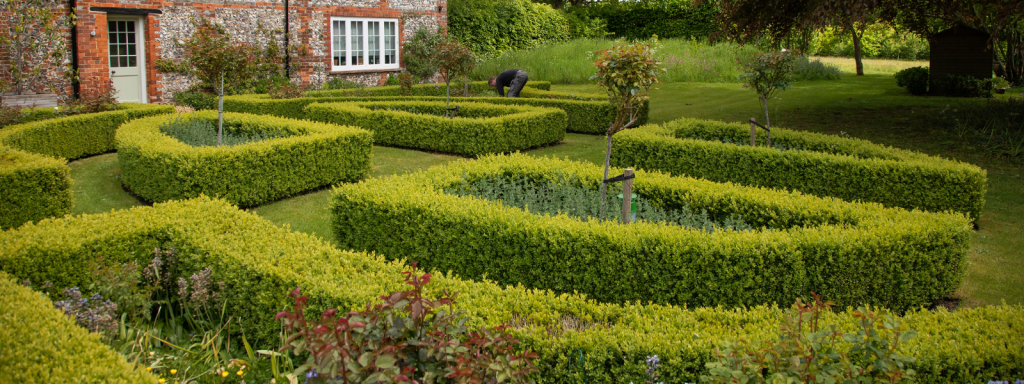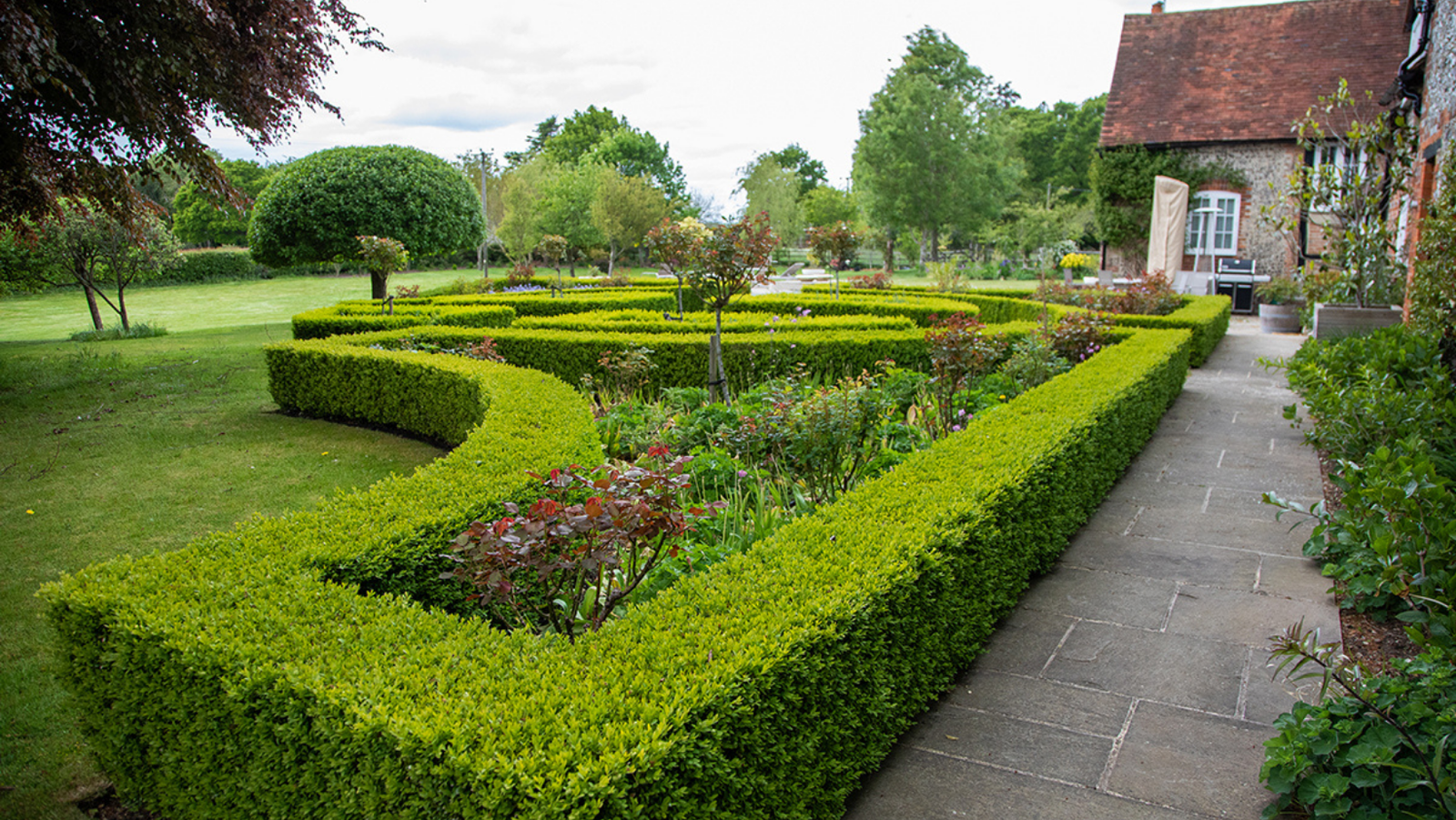
Whether it is formal or informal, the right type of hedging plants have the power to completely transform your garden.
Hedges are a great habitat for wildlife, provide privacy and security as well as protection from wind for tender or less hardy plants. They can also be a central feature of a garden design and an opportunity to be creative with shape, form and structure that will last for years to come. Whatever purpose your hedge will serve, there is a large choice of hedging plants for your garden, so choose wisely.
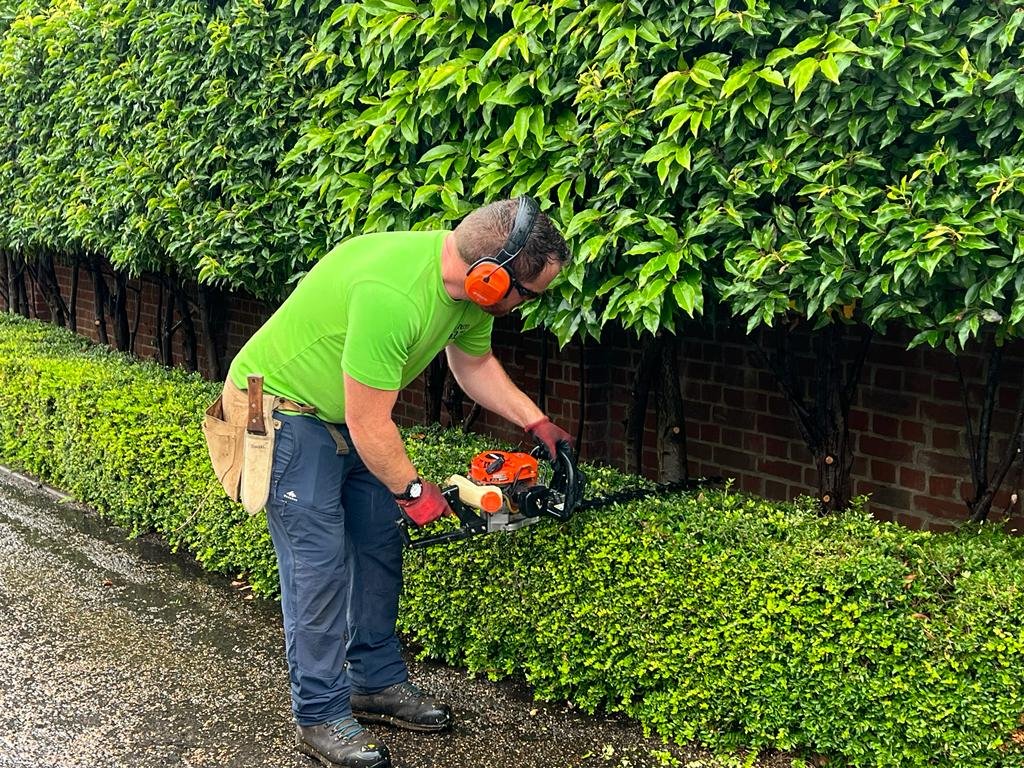
Hedge Considerations
Shape. Choose tall straight plants for large scale screening, like Italian Cypress, or create a shorter shrubby hedge from Lavender or Rosemary for something less formal and fragrant.
Soil and aspect. A tender hedging plant may struggle to establish in a very exposed windy position. Soil quality and pH also play a role in determining what is going to thrive in your garden.
Height and width. Hedging plants grow to a range of heights at maturity. Choose your hedge by height to make sure you get something you can manage.
Growth rate. An Oak tree planted as a bare root sapling takes years to reach full size. Fast-growing plants like Hazel quickly form effective barriers.
Maintenance. If you want a formal hedge, you may need to trim, shape or train your plants. Consider the time and the skill you have to maintain a formal hedge. Remember that deciduous plants will drop their leaves annually, and any that fall on pathways may require raking and collecting-up. We’ll talk more about maintaining your hedges in a future blog.
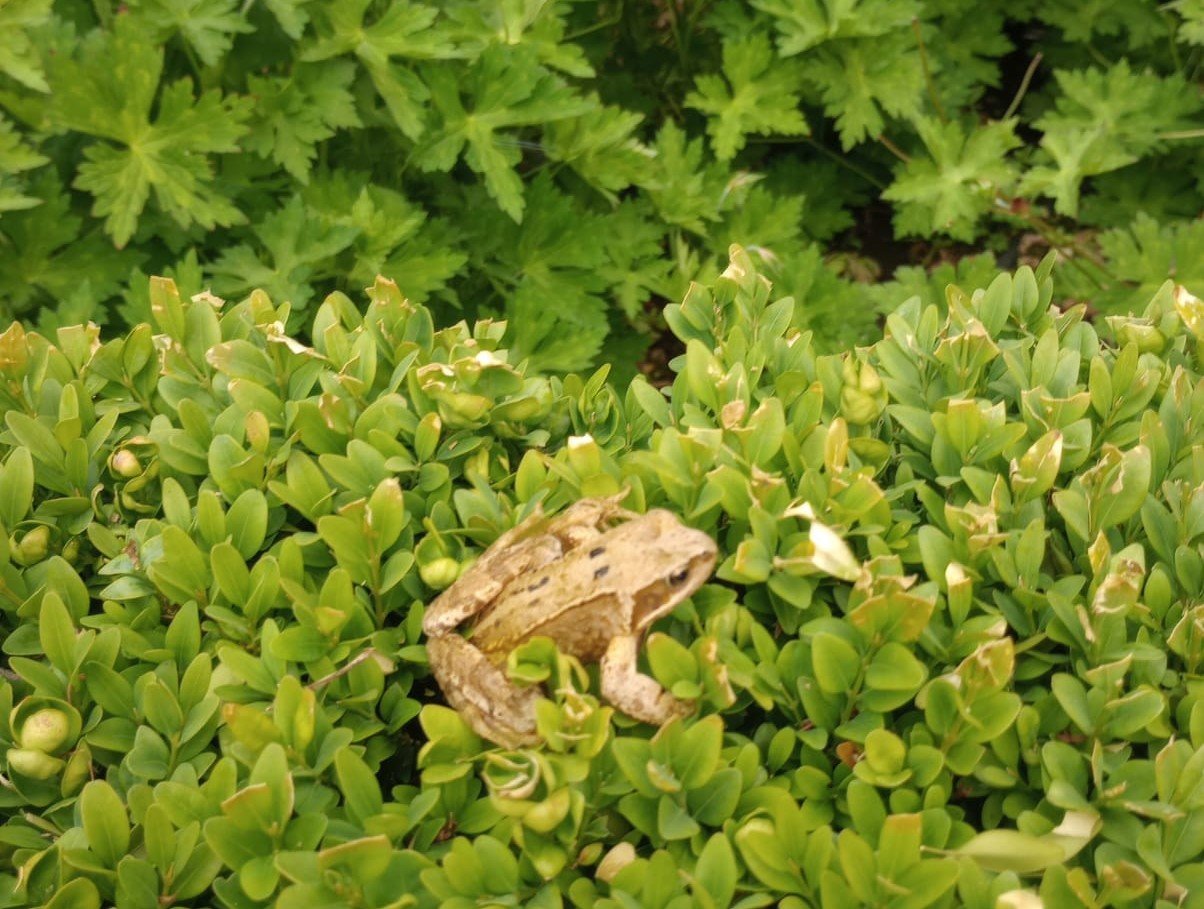
Wildlife Friendly
A native hedgerow is great if you want to attract hedgehogs, birds, small mammals, insects and even amphibians!
Choose native trees and shrubs such as hawthorn, beech, spindle, blackthorn, hazel, holly, field maple, buckthorn. Many of these have berries which provide birds with food in the Autumn and Winter.
If you grow native plants along the bottom of the hedge too, you’ll attract even more residents. Leave leaf litter and seed heads at the base, this will also encourage wildlife.
Only trim once a year, however, ideally in winter and definitely not in the nesting season.

Security and Privacy
A hedge can be a useful and softer feature as an alternative to a fence or wall for security and privacy. Choosing the right plant is important to ensure year-round protection.
Holly – whilst not as large and sharp as other thorny shrubs and trees, each evergreen leaf is edged with prickles. The bush grows densely enough to prove difficult to push through.
Hawthorn – a common sight along most of Britain’s country hedgerows (and great for wildlife) hawthorn is another dense, thorny, thicket-forming shrub that forms a very effective barrier.
Privet– a traditional garden hedging plant with small leaves that is easy to grow and takes well to regular clipping. This can develop easily into a dense and high hedge.
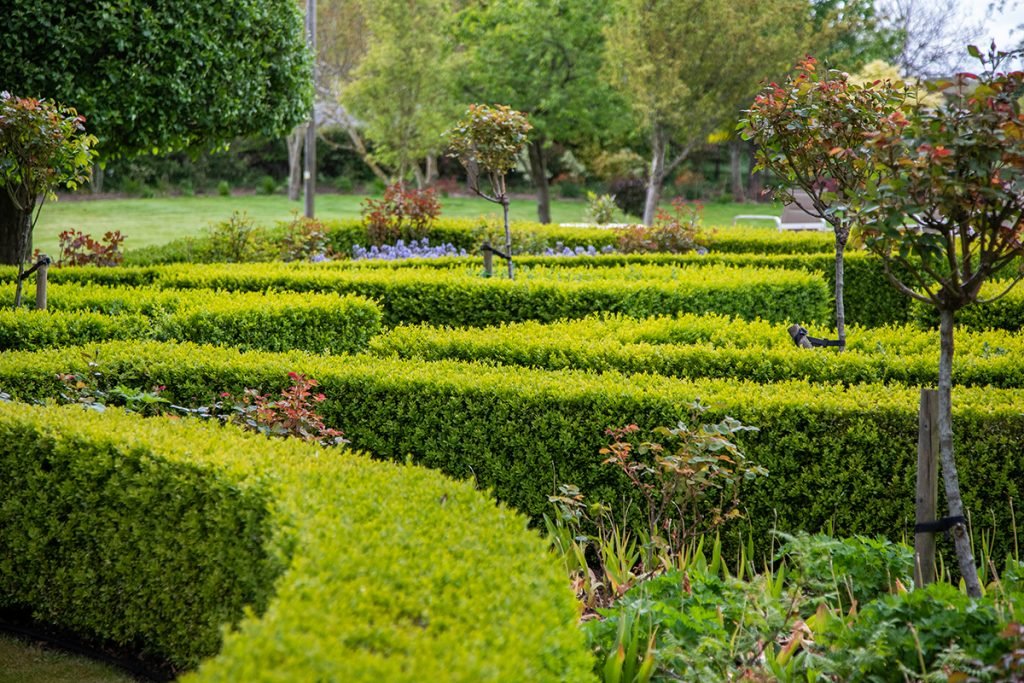
Shape
This is where creativity can really come into a garden design and the choice of plant is particularly important.
Box – often used for topiary, box also suits lower growing hedges in small gardens and can be kept trimmed for a very neat and tidy appearance. Box has suffered badly, particularly in Oxfordshire, from pests and disease, so take advice beforehand.
Yew – the small, densely growing leaves make this plant well-suited to formal shaped hedging. As a native plant producing berries in Winter, the birds love it too.
Ilex – a hardy, reliable variety is a superb alternative to Box hedging. Ilex crenata is a popular choice for decorative hedging or ‘cloud’ topiary, but check your soil conditions are right for it as it prefers well-drained, slightly acidic conditions.
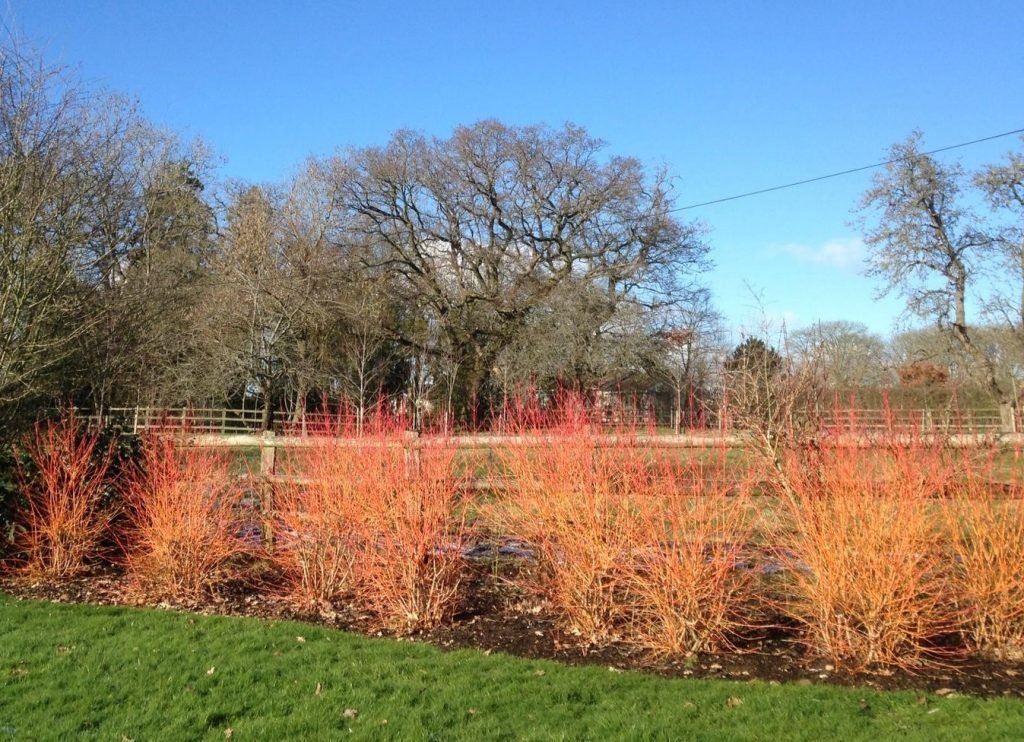
Colour
Colour is a key consideration in any garden design and hedges can be used to great effect to bring colour into a garden.
Red Dogwood – beautiful bright stems through the winter, flowers in spring, and fresh green growth in summer.
Amelanchier- colourful leaves that change through the season and prolific white spring flowers.
When and What to Plant
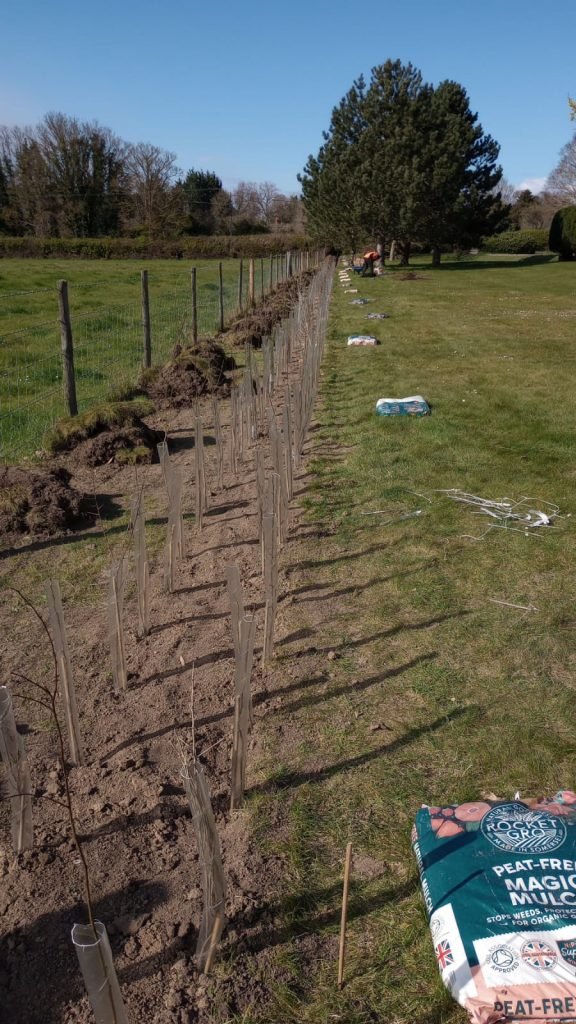
For a cost-effective hedge, plant bareroot saplings during the autumn and winter.
The roots will establish over the colder months ready to support fresh growth come spring.
Bareroot hedging is generally between 45cm (18”) and 90cm (35”) high on arrival, creating an initially low boundary that fills out over the years.
Remember to protect saplings with guards as they are a welcome snack for rabbits and deer.
If you want instant impact choose container grown trees or shrubs that are in leaf, and plant them out between autumn and early summer.
You can also plant ‘instant hedging’ that is supplied in blocks ready to plant into a trench, although these are best installed by professionals.
You’ll probably find that shrubby low growing hedging plants are bushier when they’ve been grown in containers.
So, if you thought there was nothing to a hedge – think again!
If you’d like help in either choosing or maintaining your hedge, get in touch with the team at GreenArt.
